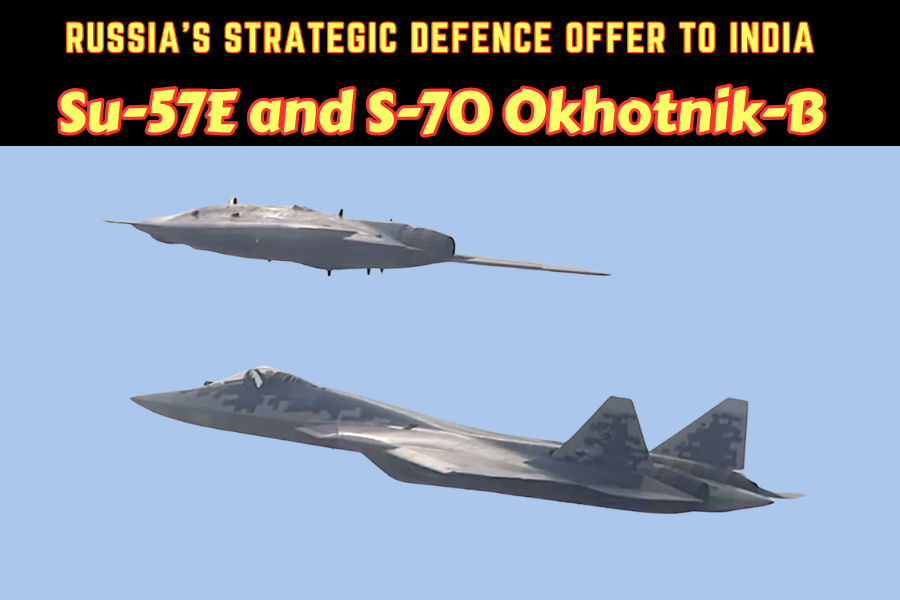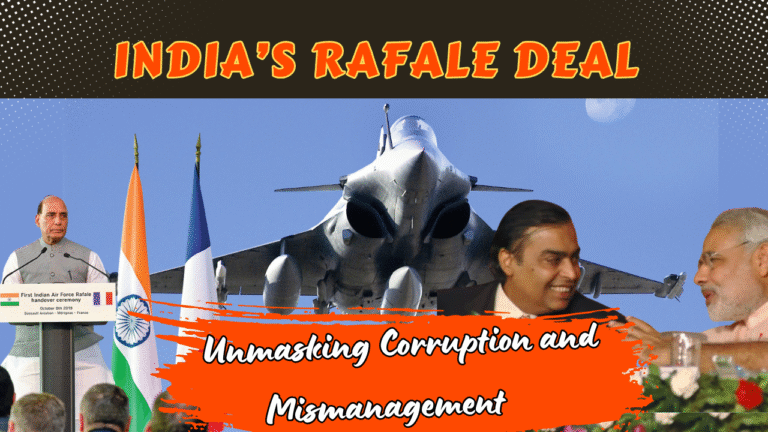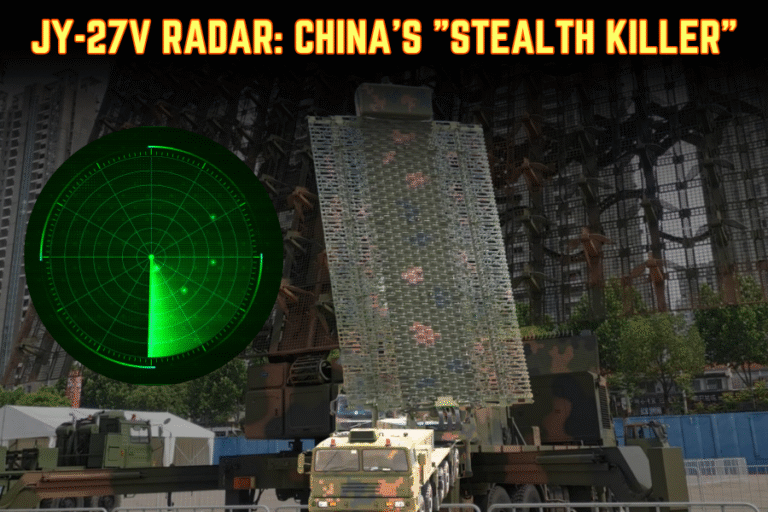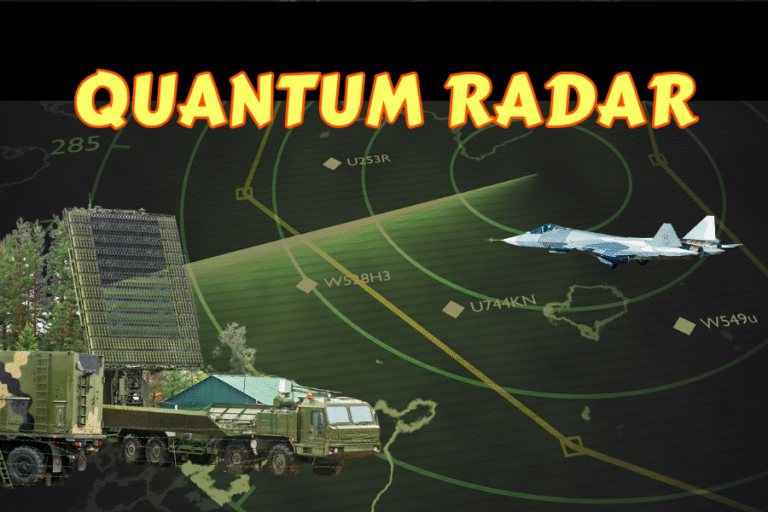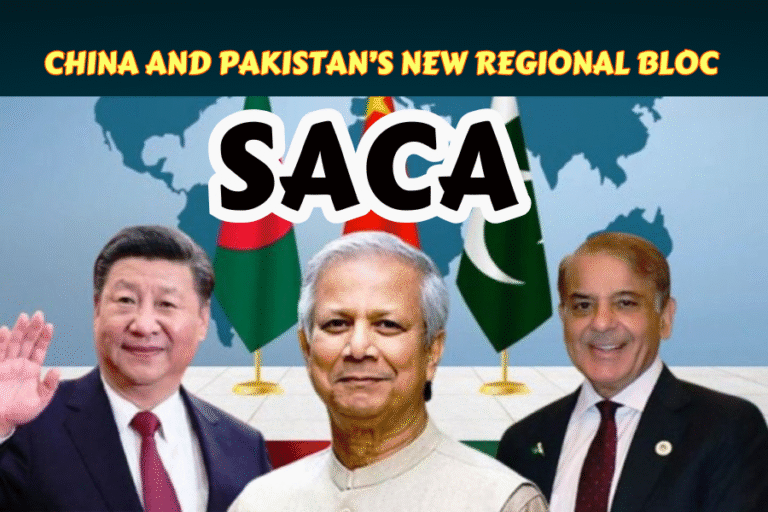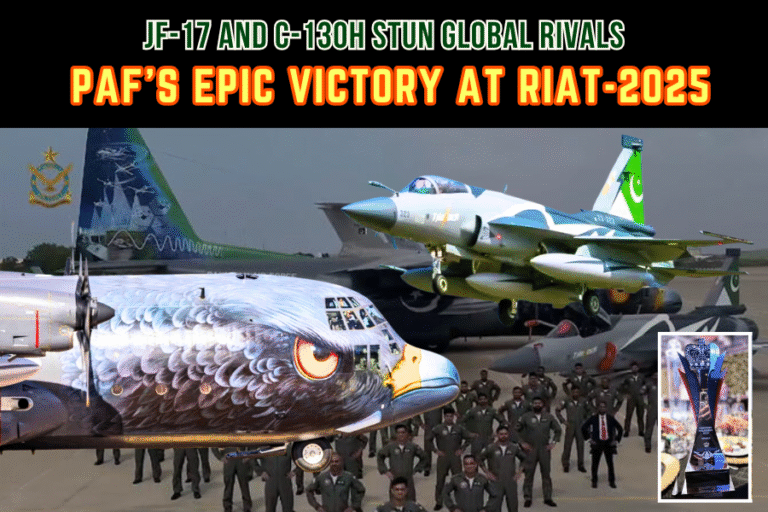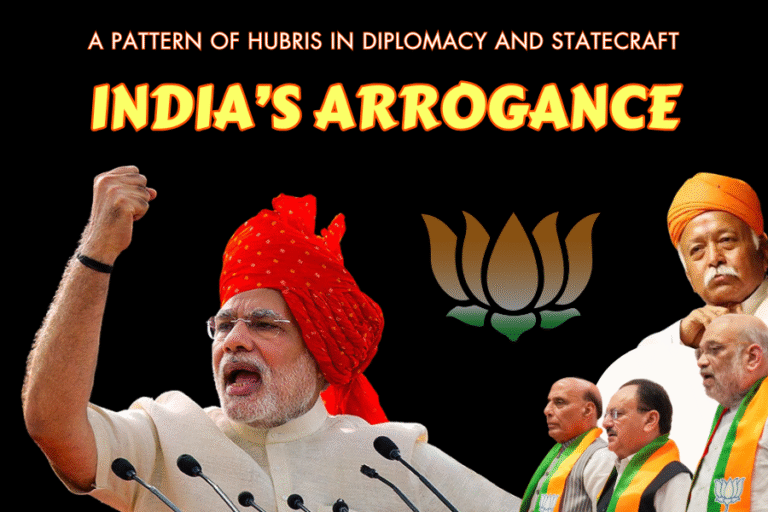(By Khalid Masood)
In a bold move to deepen defence ties, Russia has proposed supplying India with its fifth-generation Sukhoi Su-57E stealth fighter and the Sukhoi S-70 Okhotnik-B unmanned combat aerial vehicle (UCAV) in a Manned-Unmanned Teaming (MUM-T) configuration, announced in early July 2025. This offer, presented by Russia’s state-owned Rostec and Sukhoi, aligns with India’s Make in India and Aatmanirbhar Bharat initiatives, promising full technology transfer, co-production at Hindustan Aeronautics Limited (HAL)’s Nashik facility, and source code access for integrating indigenous systems. Amid India’s Indian Air Force (IAF) squadron shortfall, regional tensions following the May 2025 India-Pakistan conflict, and delays in the Advanced Medium Combat Aircraft (AMCA) programme, this proposal offers India a strategic opportunity to enhance its air power and counter emerging threats from China and Pakistan. This article examines the technical capabilities, geopolitical context, and implications of Russia’s offer, drawing on verified sources to provide a comprehensive analysis.
I. Background: India’s Air Power Challenges
The IAF, with only 31 squadrons against a sanctioned strength of 42, faces a critical capability gap, exacerbated by the May 2025 India-Pakistan conflict. During Operation Sindoor, launched in response to the Pahalgam attack on 22 April 2025, which killed 26 civilians, the IAF lost six fighter jets—three Rafales, a MiG-29, a Mirage-2000, and a Su-30MKI—to Pakistan’s J-10C jets and PL-15 missiles. Pakistan’s drones reaching Delhi and strikes on 36 Indian military assets, including airbases at Udhampur, Pathankot, and Adampur, exposed vulnerabilities in India’s air defence, particularly against Pakistan’s Turkish-made Bayraktar TB2 and Chinese CH-4 drones. With China deploying J-20 stealth fighters in Xinjiang and Pakistan acquiring J-10C and potentially J-35 stealth jets, India urgently needs fifth-generation capabilities to maintain deterrence.
The AMCA, India’s indigenous fifth-generation fighter, faces delays, with operational deployment projected for the mid-2030s. The IAF’s reliance on 272 Su-30MKI, 36 Rafale, 69 MiG-29, and 50 Mirage-2000 jets, while robust, lacks stealth and advanced MUM-T capabilities critical for modern warfare. Russia’s offer, timed ahead of President Vladimir Putin’s anticipated 2025 visit, addresses these gaps with the Su-57E and S-70 Okhotnik-B, leveraging India’s familiarity with Russian platforms.
II. The Su-57E and S-70 Okhotnik-B: Technical Capabilities
Sukhoi Su-57E: Russia’s Fifth-Generation Stealth Fighter
The Su-57E, the export variant of Russia’s first stealth fighter, is a twin-engine, multi-role platform designed for air superiority, precision strikes, and electronic warfare. Key features include:
- Stealth: A reduced radar cross-section (RCS) with internal weapon bays, though analysts note its stealth is less advanced than the US F-35 or F-22 Raptor.
- Performance: Supercruise capability for sustained supersonic flight without afterburners, powered by AL-41F1 engines (with potential upgrades to AL-51 for enhanced stealth). Speeds exceed Mach 2, surpassing the F-35.
- Avionics: N036 Byelka AESA radar, infrared search and track (IRST), and advanced electronic warfare systems for countering enemy defences.
- Armament: 12 hardpoints (six internal), compatible with R-77M and R-37M air-to-air missiles, Kh-59MK2 cruise missiles, and potential integration of Indian systems like Astra and Rudram missiles.
- Manoeuvrability: 3D thrust-vectoring engines enhance agility, critical for dogfights and high-altitude operations in the Himalayas.
The Su-57E’s MUM-T integration allows it to control UCAVs like the S-70 Okhotnik-B, enabling coordinated operations against high-value targets. Russia offers 20–30 off-the-shelf Su-57E jets within 3–4 years, with 60–70 locally produced units by the early 2030s, supporting India’s Make in India initiative.
Sukhoi S-70 Okhotnik-B: Stealth UCAV
The S-70 Okhotnik-B, a heavy stealth UCAV, complements the Su-57E as a “loyal wingman.” Its features include:
- Stealth and Range: A 6,000 km range and low RCS, ideal for penetrating defended airspace.
- Payload: Up to 3,000 kg of precision-guided munitions, including the Kh-47M2 Kinzhal hypersonic missile, surpassing the US MQ-28’s 500 kg payload and China’s GJ-11’s 2,000 kg.
- MUM-T Integration: Real-time coordination with the Su-57E, enabling deep-strike missions against air defences, command centres, or infrastructure.
- Autonomy: Advanced AI for semi-autonomous operations, reducing risk to manned aircraft.
The S-70’s integration trials with the Su-57 have been successful, offering India a force multiplier for high-risk missions, as demonstrated in Ukraine for SEAD (Suppression of Enemy Air Defences) roles.
III. Strategic Context: Post-May 2025 Conflict Dynamics
The May 2025 India-Pakistan conflict, codenamed Operation Sindoor, exposed India’s air defence vulnerabilities. Pakistan’s J-10C jets, equipped with PL-15 missiles, downed six IAF jets, while drones reached Delhi, and strikes hit 36 Indian military assets, including S-400 systems. The US-mediated ceasefire on 10 May 2025, announced by President Donald Trump, highlighted India’s need for advanced stealth and unmanned systems to counter Pakistan’s Chinese and Turkish technology and China’s J-20 deployments.
Russia’s offer addresses these threats, with the Su-57E and S-70 providing India with stealth, deep-strike, and deterrence capabilities. The proposal’s timing, ahead of Putin’s visit, leverages India’s historical reliance on Russian platforms (70% of IAF jets are Russian-origin) and contrasts with US offers of F-35A jets, which lack technology transfer and face export restrictions.
IV. Geopolitical Implications: Balancing Alliances
India’s strategic calculus involves balancing ties with Russia, the US, and other partners amidst China and Pakistan’s growing capabilities. Russia’s offer aligns with India’s Aatmanirbhar Bharat initiative, promising:
- Technology Transfer: Full access to Su-57E source codes, enabling integration of Indian systems like Uttam AESA radar, Astra missiles, and Virupaksha mission computers. This contrasts with the US’s restrictive F-35 deal.
- Co-Production: Local manufacturing at HAL Nashik, which has produced over 220 Su-30MKI jets and 920 AL-31FP engines, supports India’s aerospace self-reliance.
- AMCA Support: Russian expertise in stealth, engines, and avionics could accelerate the AMCA programme, reducing delays.
However, India faces challenges:
- Geopolitical Risks: Iran expressed displeasure over Russia’s offer, citing Moscow’s failure to deliver S-400 systems to Tehran while prioritizing India, a perceived US ally. This could strain India’s ties with Iran.
- Stealth Concerns: Analysts question the Su-57E’s stealth compared to the F-35, noting a larger RCS and less mature low-observability technology.
- US Relations: Accepting Russia’s offer may complicate India’s growing defence ties with the US, especially under CAATSA sanctions risks, though Washington appears to have tacitly permitted the deal.
V. India’s Decision-Making Framework
India’s Defence Ministry, led by Defence Secretary Rajesh Kumar Singh, is evaluating the Russian proposal alongside alternatives like the US F-35A and France’s Rafale. Key considerations include:
- Urgency: With 31 squadrons, the IAF needs immediate solutions. Russia’s promise of 20–30 Su-57E jets by 2028–2029 and Su-35M jets for the Multi-Role Fighter Aircraft (MRFA) tender (114 jets) offers a quicker timeline than the AMCA.
- Cost: The Su-57E (approximately $80–100 million per unit) and Su-35M ($65–80 million) are more cost-effective than the Rafale ($120 million) or F-35 ($80–100 million), with technology transfer adding long-term value.
- Operational Compatibility: The Su-57E and Su-35M share 70–80% systems with the Su-30MKI, simplifying pilot training and maintenance.
- Strategic Deterrence: The Su-57E and S-70’s MUM-T configuration counters Pakistan’s J-10C and potential J-35, and China’s J-20, offering deep-strike and SEAD capabilities.
India’s HAL Nashik facility, with its Su-30MKI production expertise, is well-positioned for Su-57E co-production, potentially delivering 60–70 jets by the early 2030s.
VI. Challenges and Criticisms
Despite its appeal, the Russian offer faces scrutiny:
- Reliability Concerns: Past issues with Russian platforms, like the INS Vikramaditya’s delayed delivery and maintenance challenges, raise doubts about Su-57E reliability.
- Stealth Performance: The Su-57E’s stealth is debated, with some analysts citing a larger RCS than Western counterparts, potentially limiting its effectiveness against advanced air defences.
- Geopolitical Tensions: India’s balancing act between Russia, the US, and Iran risks diplomatic friction, especially with US sanctions looming.
- Technical Integration: Integrating Indian systems like Astra and Rudram with Russian platforms may face compatibility issues, as seen with previous Rafale integrations.
VII. Broader Implications for India’s Defence Strategy
Russia’s offer aligns with India’s goal of aerospace self-reliance, reducing dependence on foreign suppliers. The Su-57E and S-70 enhance India’s deterrence against China and Pakistan, particularly after the May 2025 conflict exposed vulnerabilities. The MUM-T configuration introduces a new paradigm in Indian air warfare, enabling coordinated strikes and reconnaissance with minimal risk to pilots. Moreover, technology transfer supports the AMCA, positioning India as a global aerospace power by the 2030s.
However, India must weigh the US F-35’s superior stealth and network-centric warfare capabilities against Russia’s cost-effective, customizable offer. The decision will shape India’s strategic alignment, with Russia offering a partnership rooted in historical ties and Make in India synergy, while the US emphasizes interoperability with Western allies.
VIII. Conclusion
Russia’s proposal to supply India with the Sukhoi Su-57E and S-70 Okhotnik-B marks a strategic pivot to bolster the IAF’s capabilities amid regional threats and the May 2025 conflict’s fallout. The Su-57E’s stealth, supercruise, and MUM-T integration with the S-70’s deep-strike capabilities offer India a robust response to Pakistan’s J-10C and China’s J-20. With full technology transfer, co-production at HAL Nashik, and source code access, the deal aligns with Make in India and Aatmanirbhar Bharat, promising 20–30 jets by 2028–2029 and 60–70 by the 2030s. Despite concerns over stealth performance and geopolitical risks, Russia’s offer positions India to bridge its squadron gap, enhance deterrence, and accelerate the AMCA programme. As India navigates this high-stakes decision, the Su-57E and S-70 could redefine its air power, cementing its role as a regional powerhouse.

